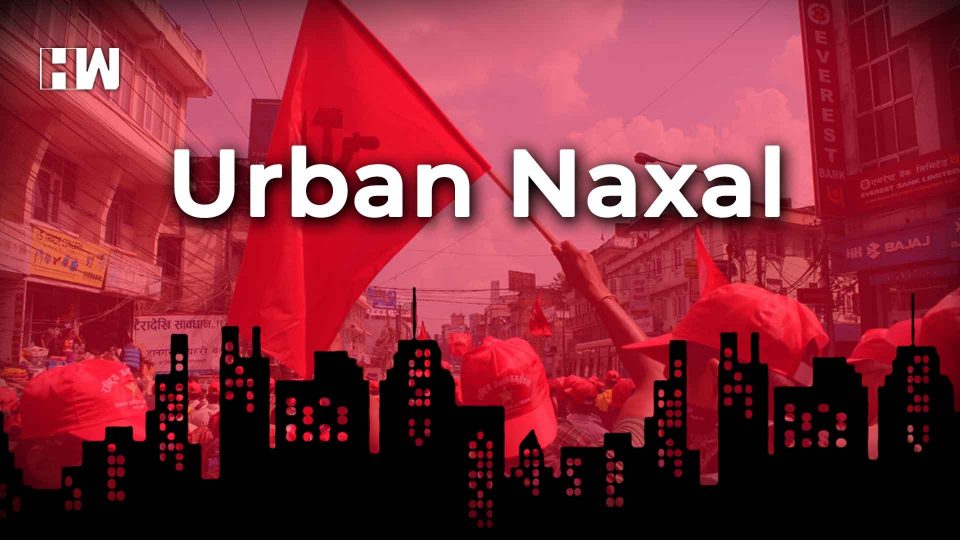Though the term Urban Naxal has entered popular usage recently, the concept of Urban Naxalism, however, emerged with the birth of CPI(Maoist) in 2004.
The social media is obsessed with a new term these days- “Urban Naxals”. Well, the term has been in the public discourse for quite sometime. However, it was only after the arrest of five activists in a multi-city raid on Tuesday by Maharashtra Police under the charge of being “Urban Naxals” or “Naxal Sympathisers”, that the term sparked a debate around the legitimacy and usage of it.
The term “Urban Naxal” can be explained in simplest terms i.e. people living in urban areas having an inkling of Naxalite ideologies. The Maharashtra Police said that the arrested activists- Sudha Bharadwaj, Arun Ferreira, Vernon Gonsalves, Gautam Navlakha and P Varavara Rao, had links with the banned Communist Party of India (Maoist) and even planned a plot to assassinate PM Modi. The CPI(Maoist) aims at overthrowing the government of India through people’s war. The party is regarded as a “left-wing extremist entity” and a terrorist outfit by the Indian government. The group is officially banned by the state governments of Odisha, Chhattisgarh, and Andhra Pradesh, among others. The party ferociously supported Guerrilla Warfare techniques and included several intellectuals that would spread the party’s propaganda.

Though the term Urban Naxal has entered popular usage recently, the concept of Urban Naxalism, however, emerged with the birth of CPI(Maoist) in 2004. It is an age-old tactic used by the Maoists to target mainly the urban centres, organise a large number of masses which in turn will help them provide military personnel, infrastructure and material. In the same year, the party released a document elaborating how to spread its agenda in the urban areas under the title- “Urban Perspective”.
The 53-page document not only spells out the objective of the Urban revolution that the party wants to bring but also the ways to achieve this. For example, paragraph 3.2 of the document with the title “Main Objectives of Our Urban Work” deals with the various tasks to be undertaken to take the CPI (Maoist) propaganda to the urban poor.
The modus operandi of the organization remain mobilising the sections of societies like the working class, as well as other classes and sections like the semi-proletariat, students, middle-class employees, intellectuals. The document mentions that the mobilization aims at a “revolutionary movement”. The Maoist ideology also vehemently calls for opposing globalisation and ‘Hindu Fascism’.

What is more alarming is the call for military tasks to be performed by these masses in order to wage a war against the government in the country. The document states, “While the PGA and PLA in the countryside perform the main military tasks, the urban movement too performs tasks complementary to the rural armed struggle. These involve the sending of cadre to the countryside, infiltration of enemy ranks, organizing in key industries, sabotage actions in coordination with the rural armed struggle, logistical support, etc.” This itself is enough to explain how the Maoist ideology has been since the very beginning aiming to build an urban front that would keep milking its insurgent operations in the rural areas with funds and personnel.

Many who have raised concern about the Urban Naxal phenomenon, say that the activities are generally covert which makes it hard to detect and identify those running this drive. The invisibility of this threat makes it even more dangerous. The left-wing extremism has resulted in thousands of deaths. According to the South Asia Terrorism Portal, in the span of 13 years, from 2005 to 2018, as many as 7951 deaths were reported due to left-wing extremism. In 2010, it reached its peak killing more than 1000 civilians. Though the number of deaths has shown a gradual decline in the deaths, it does not, however, confirms that the threat from such kind of extremism has been decimated completely. The subsequent governments too, have acknowledged the threat this internal war poses.
Many have argued that the definition of Urban Naxal is too vague and classifies every critic of the present-day government as Urban Naxal. Though there can be debates and discussions surrounding the determination of specifics for this term, one has to acknowledge that the threat does exist and India needs to do more to fight it.
As an independent media platform, we do not take advertisements from governments and corporate houses. It is you, our readers, who have supported us on our journey to do honest and unbiased journalism. Please contribute, so that we can continue to do the same in future.

